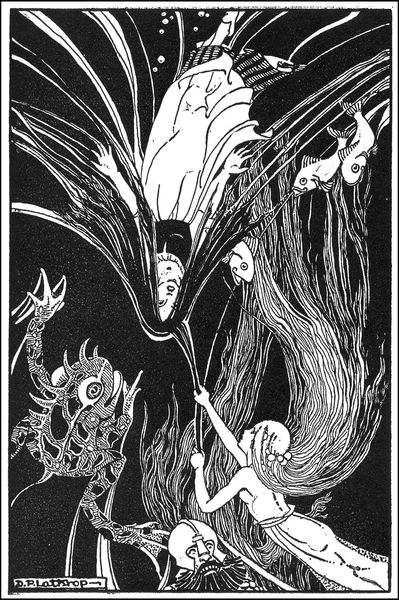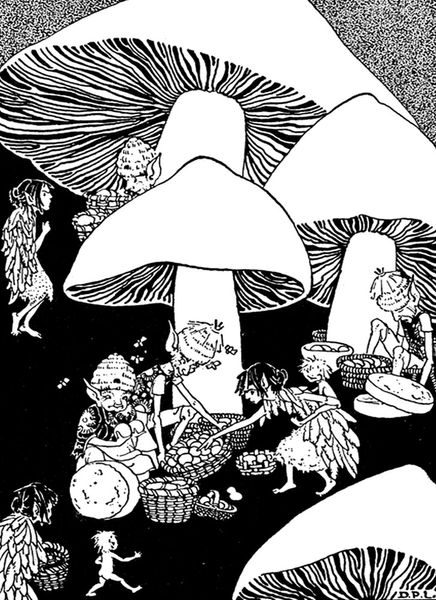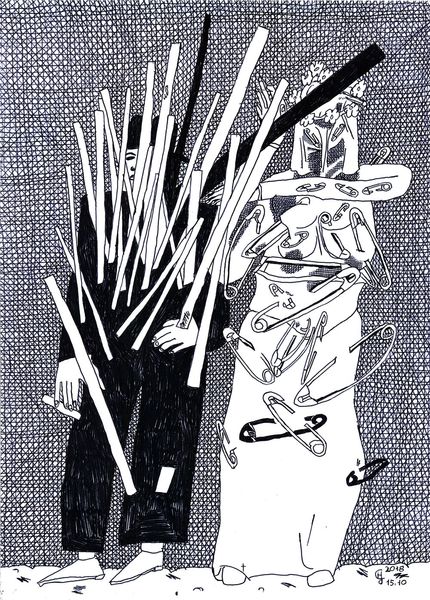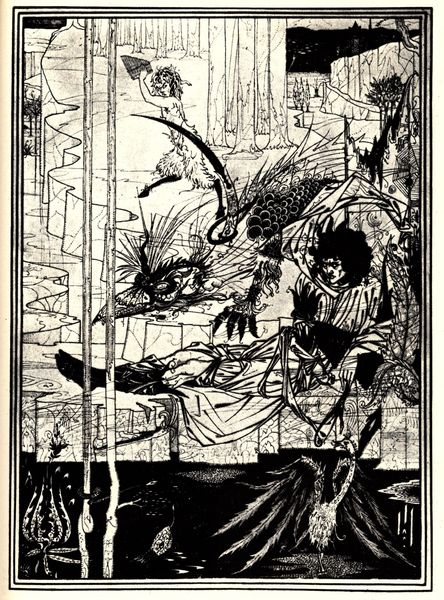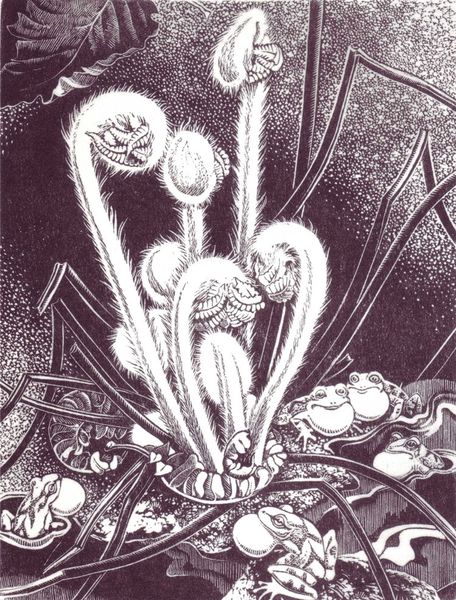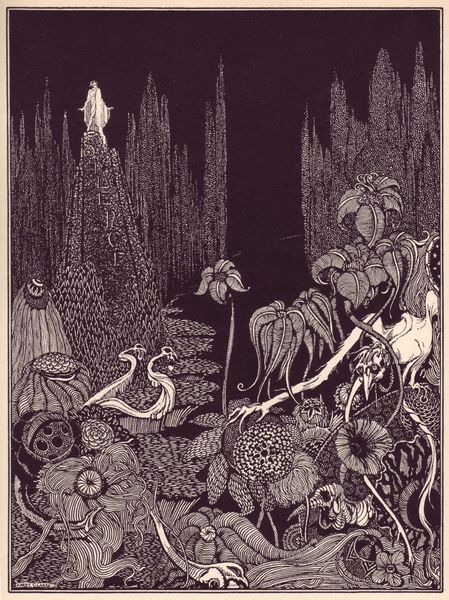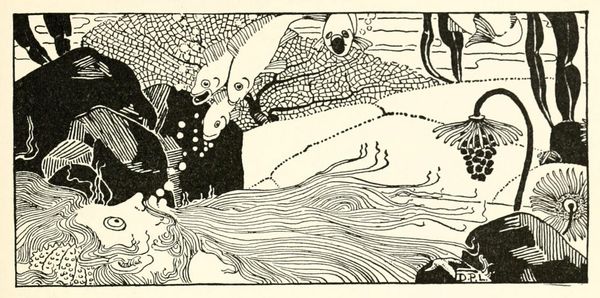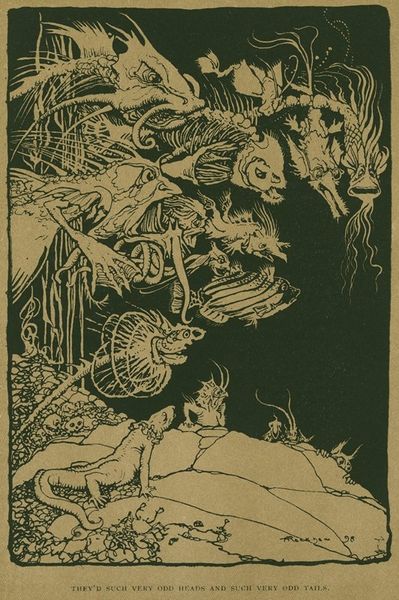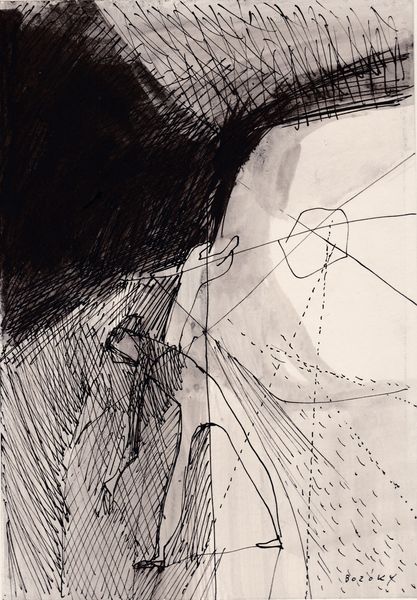
Copyright: Dorothy Lathrop,Fair Use
Curator: This is an illustration by Dorothy Lathrop from 1929, created for the book "Hitty, Her First Hundred Years" by Rachel Field. Lathrop used ink on paper to bring this miniature world to life. Editor: Oh, wow. I get this immediate feeling of… suspended animation? Like floating in a dream, maybe a slightly unsettling one. The lines are so delicate, but the whole scene feels a bit claustrophobic. Curator: The tension you're picking up on is interesting. We could see it as representative of the challenges faced by women artists in the early 20th century, especially in breaking through the established traditions dominated by men. A space where delicate artistry is also somewhat trapped. Editor: Trapped… Yeah! Like she's peacefully adrift, but among… sea anemones? And those dark, inky textures create a bit of a visual snarl, a kind of beautiful, strange, deep-sea garden that both invites and unnerves. It's almost dreamlike with that miniature world building under the sea! Curator: And it reflects elements of the *Ukiyo-e* aesthetic, particularly in its focus on the natural world and a flattened perspective. The miniature is important; Hitty, in the book, is a doll only a few inches tall and we view her, here, among starfish, shells, flora... and that anemone! Editor: Absolutely, there is an intriguing intimacy from this miniature point of view of the main character! As I keep staring, the more the floral print she wears seems to dissolve into the plants that surround her. Does it feel as if the protagonist’s own sense of self begins to morph in tandem with this alien surrounding? Curator: Precisely, and one could posit it speaks to the way identities—especially those marginalized—are shaped by, and sometimes submerged within, the prevailing cultural and political climate. Think of Hitty in the narrative as constantly navigating different landscapes, reflecting the fluid and adaptable nature of identity itself. Editor: You know, looking at it again, the darkness gives way to this strange sense of peace, I suppose. That state of suspension now reads less ominous and much more akin to letting yourself sink below the weight of daily anxieties. The artist gave the audience a strange yet welcome opportunity for self reflection. Curator: Indeed. And that's the brilliance of art. How it continues to inspire our current realities through diverse cultural experiences across eras, always available to offer meaningful dialogue and perspective.
Comments
No comments
Be the first to comment and join the conversation on the ultimate creative platform.

